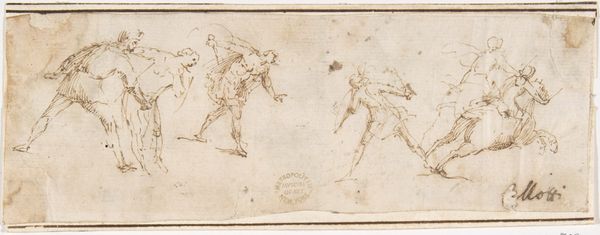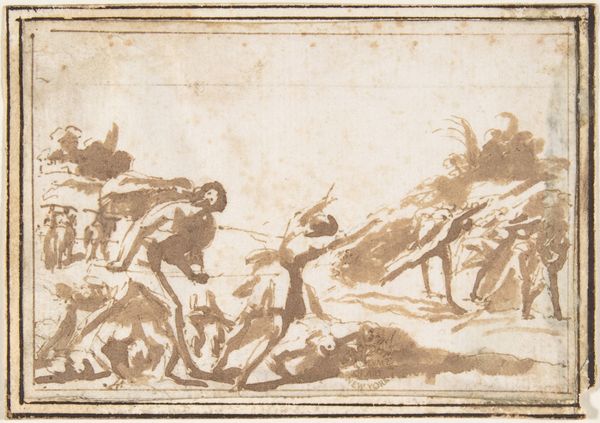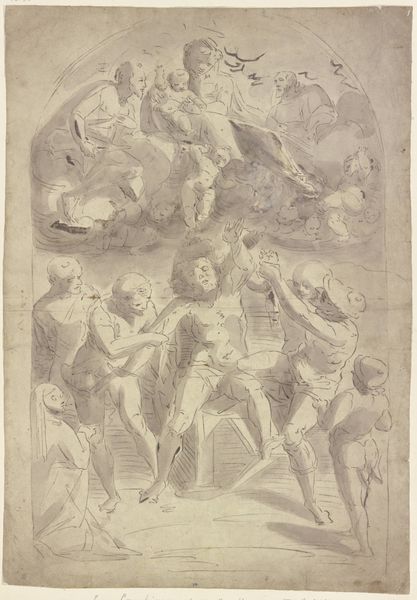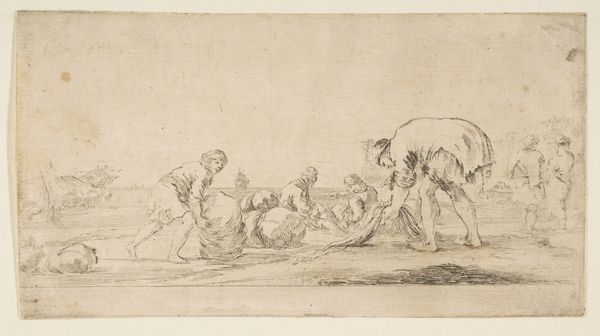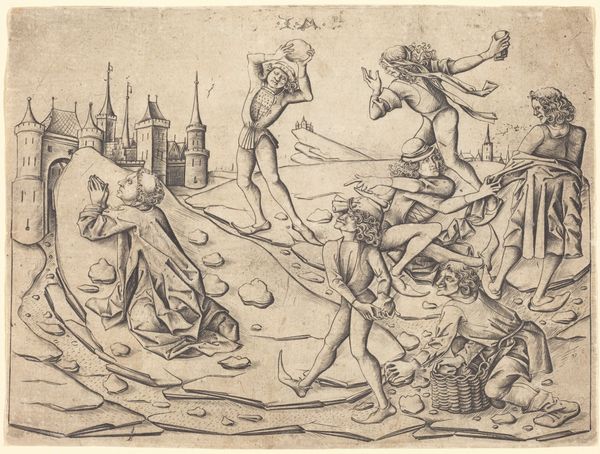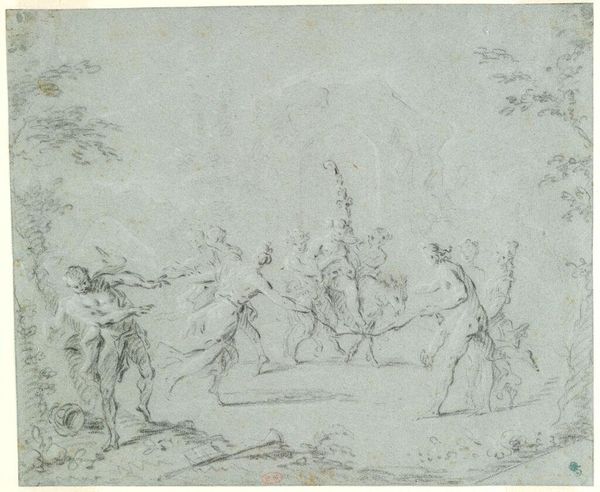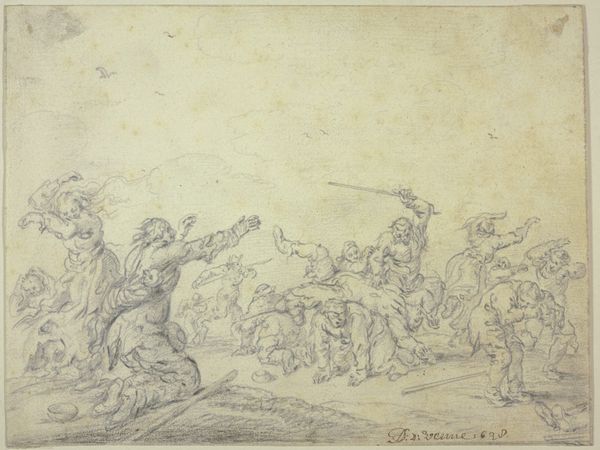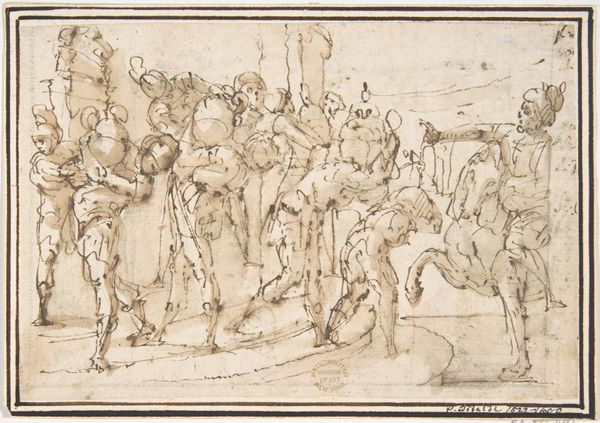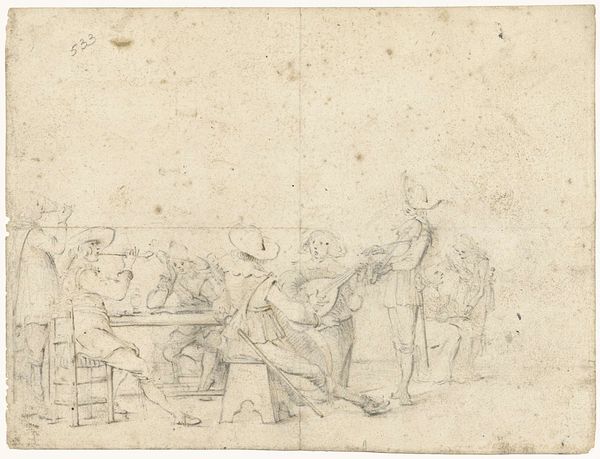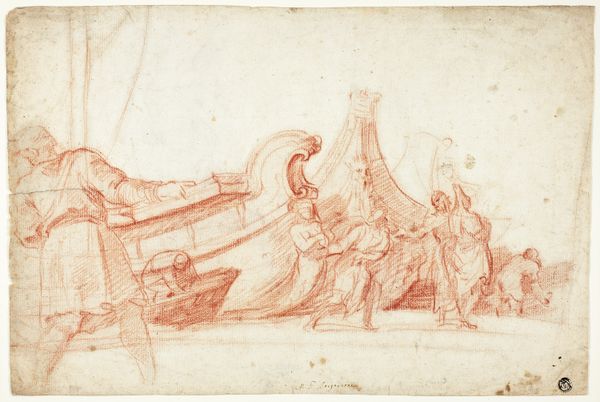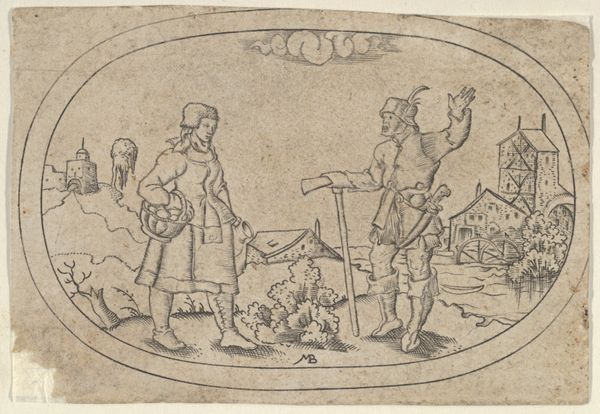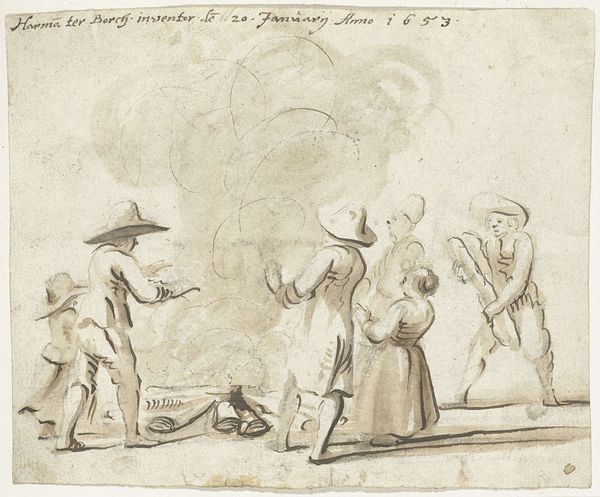
drawing, paper, pencil, pen
#
drawing
#
narrative-art
#
pencil sketch
#
figuration
#
paper
#
pencil
#
pen
#
history-painting
#
academic-art
Dimensions: diameter 103 mm, height 108 mm, width 118 mm
Copyright: Rijks Museum: Open Domain
Curator: Before us is Gerard ter Borch's drawing, "The Judgement of Paris," estimated to be from between 1626 and 1687. It's rendered in pencil, pen and wash on paper. Editor: It feels…unfinished. Ethereal almost. The circle encompassing the scene creates a sense of contained drama, but also isolation. A kind of liminal space, not quite real. Curator: Liminal indeed. Note the recurring motifs—the caduceus held by Mercury, the figure of Paris, the three goddesses vying for the golden apple. Borch anchors the image in classical mythology. These weren’t merely aesthetic choices; they communicated erudition and linked his art to a respected tradition. Editor: But what does it mean to represent these figures again and again? Paris, caught in a forced and unpleasant judgement of three naked woman is not, perhaps, a pleasant story to modern ears. It is so thoroughly imbued with male gaze, so much an old trope. Does art merely become a vehicle to represent female bodies on display? Is Borch grappling with these questions at all? Curator: Ter Borch perhaps aims for something other than critique. Perhaps instead he seeks to interpret these symbols of beauty and power that define western cultural heritage. The judgment itself, in all its symbolic weight, echoes through artistic depictions even now, suggesting the power, peril, and ever present question marks around standards of value. And Mercury with the caduceus – is there perhaps a negotiation between worlds there, an interplay of power we often neglect to appreciate? Editor: Still, to modern eyes, the very notion of judging female beauty—reducing women to objects of competition—feels deeply problematic. The sketch's very openness asks questions of its audience and leaves room for re-interpretation. Does that inherent questioning redeem its use of tired old tropes? Curator: The very survival and repetition of this motif through art history certainly prompts these very questions, it seems! What Borch is aiming to communicate through symbolic echoes of judgement, male perspective and what women's power in those periods looked like, seems something we have not even touched on the surface of. Editor: Agreed. This small sketch really encapsulates some major issues we're still dealing with today. There is value to the liminality it has created, the questions raised by unfinishedness. Curator: Indeed, "The Judgement of Paris" reminds us how powerful symbolic imagery remains even through time and adaptation.
Comments
No comments
Be the first to comment and join the conversation on the ultimate creative platform.
